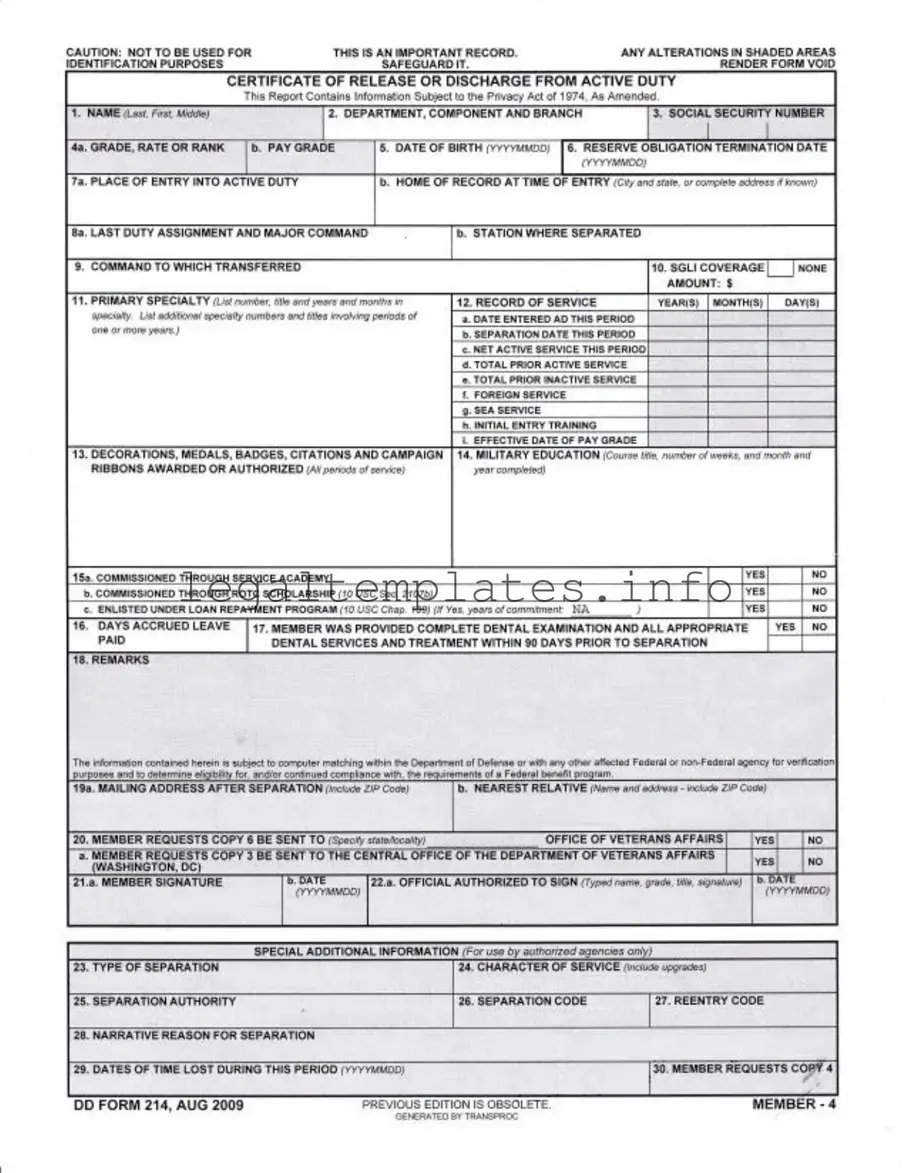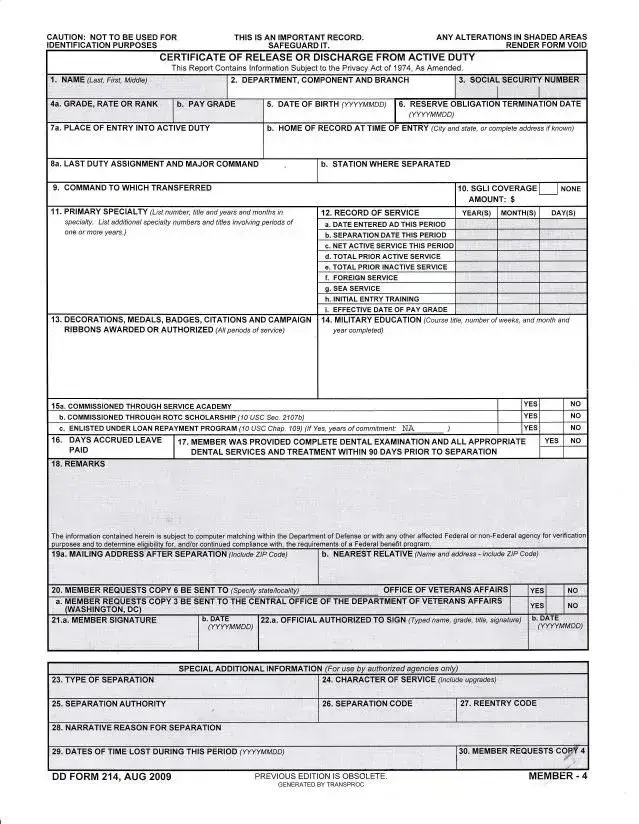What is a DD Form 214, and why is it important?
The DD Form 214, officially titled "Certificate of Release or Discharge from Active Duty," is one of the most crucial documents a veteran receives. It's a comprehensive record of a service member's time in the military, including dates of service, branch, rank, awards, and reason for discharge. This document is essential for veterans as it serves as a key to access various benefits, including healthcare, education benefits, employment opportunities, and loan applications. Safeguarding this document is crucial since it significantly impacts a veteran's post-military life.
How can someone get a replacement for a lost DD Form 214?
If a veteran loses their DD Form 214, they can request a replacement through the National Archives' National Personnel Records Center (NPRC). The request can be made online via the eVetRecs system or by mailing a completed SF-180 form to the NPRC. This process might take some time, especially if the records requested are from many years ago, so it's important to start this process as soon as the loss is discovered. Veterans are encouraged to keep multiple copies of this document in safe places to avoid complications arising from its loss.
Who should receive a copy of a service member's DD Form 214?
When a service member is discharged or retires, they receive several copies of their DD Form 214. It's advised that veterans keep several copies for personal use and safekeeping. Certain copies are required for official uses, such as applying for government benefits, joining veterans' organizations, employment purposes, and VA loan applications. A copy should also be provided to the veteran’s state, as many states have benefits for veterans. Disclosure of the DD Form 214 should always be to trusted entities due to the personal information it contains.
What kind of benefits does a DD Form 214 help a veteran access?
The DD Form 214 is the gateway to a wide range of benefits for veterans. These include healthcare services through the VA, educational benefits under the GI Bill, home loan guarantees, employment assistance, and various state-specific benefits such as reduced property taxes or educational opportunities. Additionally, the form is required for veterans seeking to join veterans' organizations, claim military honors at a funeral, or upgrade their discharge status.
Can a DD Form 214 be amended if it contains errors?
Yes, if a veteran finds errors in their DD Form 214, corrections can be requested. For minor administrative errors, such as misspellings or incorrect dates, veterans should contact the corrections board or the personnel records center that issued the form. For substantial changes, such as altering discharge status or awards, the process might involve formal review boards and providing evidence to support the claim. It's essential for veterans to review their DD Form 214 at the time of discharge and address any inaccuracies as soon as possible.
Why are there different copies of the DD Form 214, and do they serve different purposes?
Upon discharge, veterans receive several copies of the DD Form 214, and each serves a different purpose. The most notable are the Member 4 and Service 2 copies. The Member 4 copy is often required for official business, such as applying for VA benefits, because it includes the character of service and reason for discharge. The Service 2 copy contains similar information but doesn't always carry the same weight for official purposes. Veterans should carefully manage these documents, ensuring they retain the Member 4 copy for critical applications.

